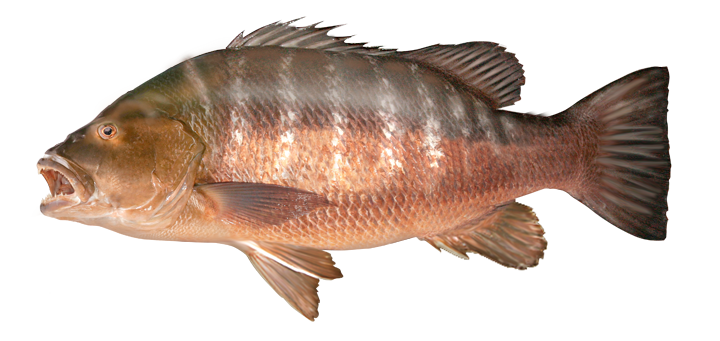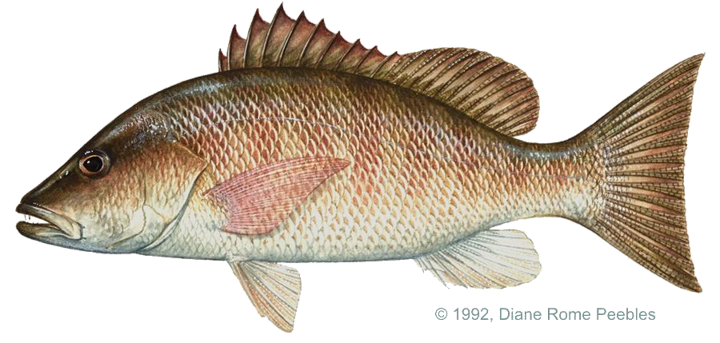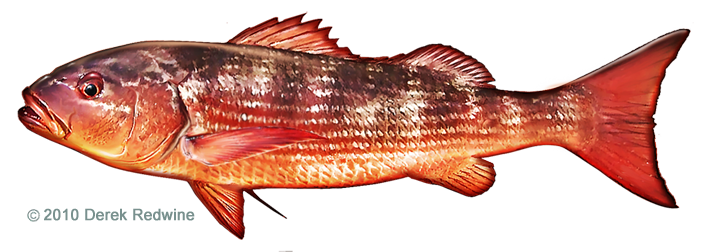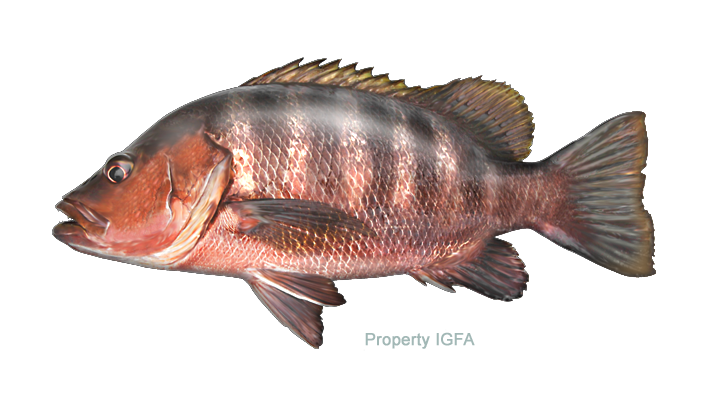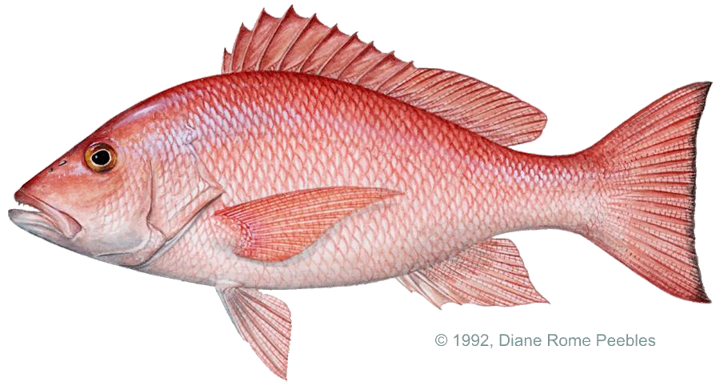Game Fish Identification Reference Guides
Snapper, mutton
(Lutjanus analis)
(Lutjanus analis)
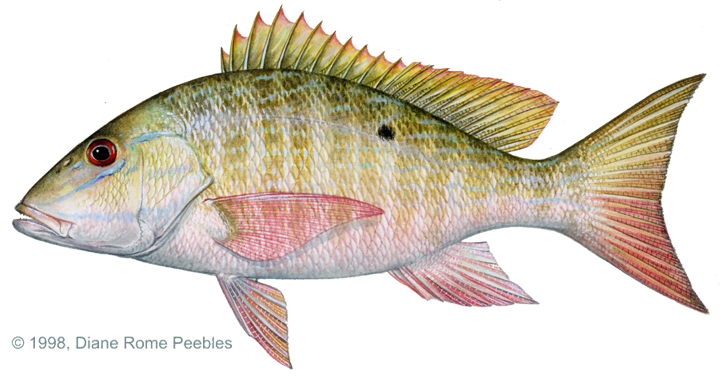
(Cuvier, 1828); LUTJANIDAE FAMILY
It is one of the most common snapper from Florida to South America. Occasionally, it reaches as far north as Massachusetts and as far south as southeastern Brazil.
It is a handsome fish, varying from orangish to reddish yellow with small blue streaks on the head, back and flanks, and orangish fins. The colors may vary, as with most species of fish. A combination of factors distinguish it from other snappers. There is a black, oval shaped spot on the upper flank on each side, the anal fin and rear edge of the dorsal fin is angulate (pointed rather than rounded), the tail is lunate, and the dorsal fin has ten spines and fourteen rays.
Although at first glance the mutton snapper and the lane snapper may look exactly alike, both having similar coloration, a lunate tail and even the same oval spot on the upper flanks, a closer look will reveal that the lane snapper has yellow streaks or horizontal stripes on the body, whereas the mutton snapper has small, oblique, blue streaks on a yellowish background, though these tend to disappear with age. Also, the anal fin and rear edge of the dorsal fin of the lane snapper are not sharply pointed but appear to be squarish or even rounded. Of all the species of Lutjanidae having a dark spot on the flanks below the dorsal fin, the mutton snapper (L. analis) is the only one in which the tooth patch in the roof of the mouth has no median extension and resembles a crescent rather than an anchor shape. Large mutton snappers take on a reddish coloration and are often mistaken for red snappers.
They attain weights in excess of 25 30 lb (11 14 kg). They are strong fighters on light tackle and can be taken on natural baits or small lures fished or slowly trolled near the bottom. Normally associated with reefs, wrecks, holes, and channels, they are nevertheless occasionally found on the flats and can be caught there by fly fishing. They may also be lured to the surface and caught on a fly.
The flesh is firm and white and is excellent eating whether baked, broiled, or prepared by any other method
It is one of the most common snapper from Florida to South America. Occasionally, it reaches as far north as Massachusetts and as far south as southeastern Brazil.
It is a handsome fish, varying from orangish to reddish yellow with small blue streaks on the head, back and flanks, and orangish fins. The colors may vary, as with most species of fish. A combination of factors distinguish it from other snappers. There is a black, oval shaped spot on the upper flank on each side, the anal fin and rear edge of the dorsal fin is angulate (pointed rather than rounded), the tail is lunate, and the dorsal fin has ten spines and fourteen rays.
Although at first glance the mutton snapper and the lane snapper may look exactly alike, both having similar coloration, a lunate tail and even the same oval spot on the upper flanks, a closer look will reveal that the lane snapper has yellow streaks or horizontal stripes on the body, whereas the mutton snapper has small, oblique, blue streaks on a yellowish background, though these tend to disappear with age. Also, the anal fin and rear edge of the dorsal fin of the lane snapper are not sharply pointed but appear to be squarish or even rounded. Of all the species of Lutjanidae having a dark spot on the flanks below the dorsal fin, the mutton snapper (L. analis) is the only one in which the tooth patch in the roof of the mouth has no median extension and resembles a crescent rather than an anchor shape. Large mutton snappers take on a reddish coloration and are often mistaken for red snappers.
They attain weights in excess of 25 30 lb (11 14 kg). They are strong fighters on light tackle and can be taken on natural baits or small lures fished or slowly trolled near the bottom. Normally associated with reefs, wrecks, holes, and channels, they are nevertheless occasionally found on the flats and can be caught there by fly fishing. They may also be lured to the surface and caught on a fly.
The flesh is firm and white and is excellent eating whether baked, broiled, or prepared by any other method













